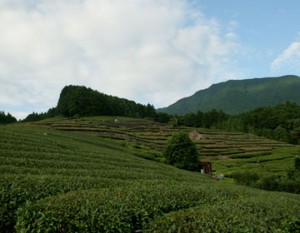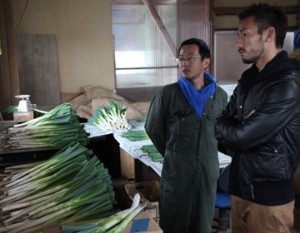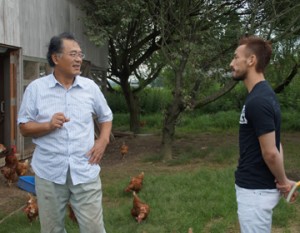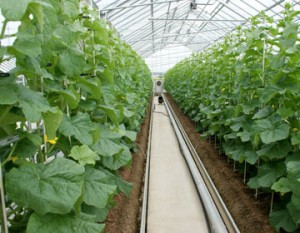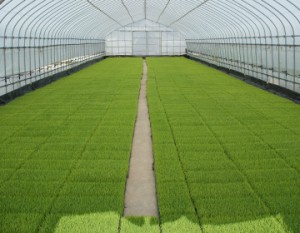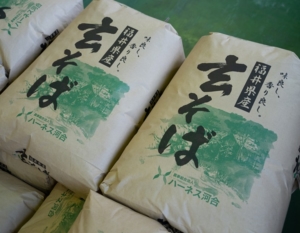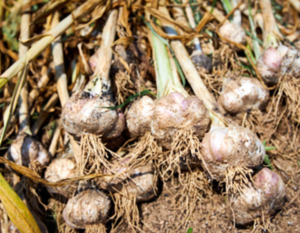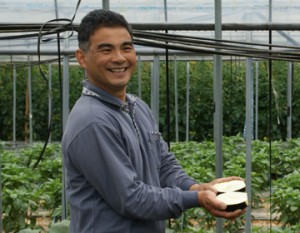Oita Prefecture is one of the top producers of shiitake mushrooms in Japan. While 90% of shiitake mushrooms sold in supermarkets are artificially cultivated and harvested in stable amounts, Kawai-gumi Co. What is the background of their efforts and their hopes for the future of shiitake cultivation?
The Roots and History of “Oita Prefecture x Shiitake Mushrooms”
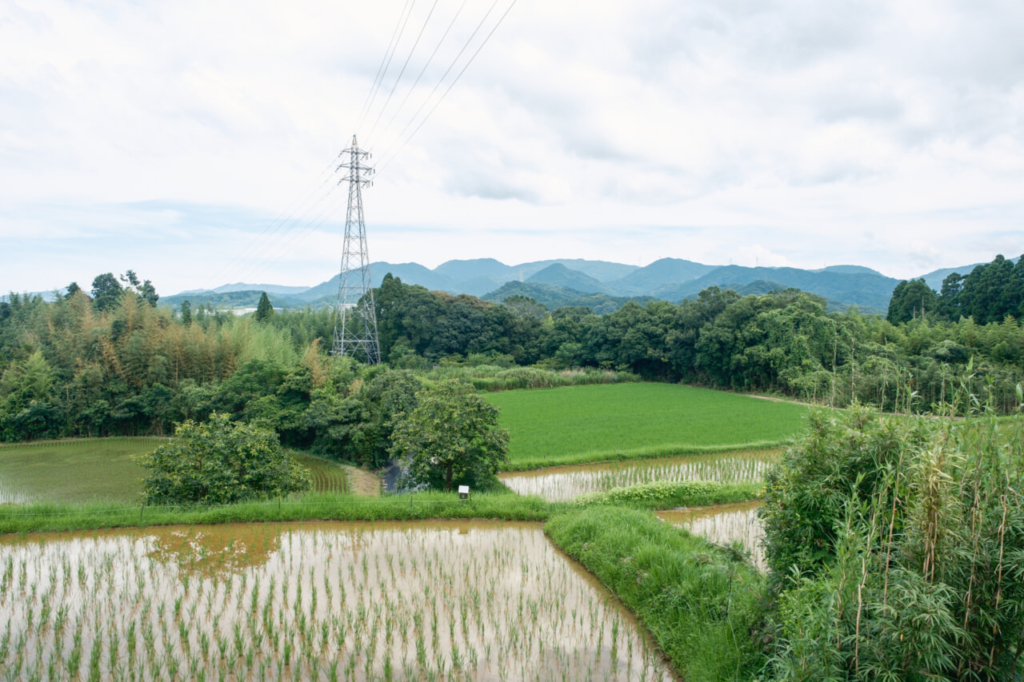
Its history dates back about 400 years from now. It began in the Edo period, when Oita Prefecture was called “Bungo no Kuni,” when a man called Genbei discovered shiitake mushrooms that originated from naturally fallen trees. The fact that the process was studied and started artificially and has been handed down to the present, and the fact that sawtooth oak trees, which are indispensable for shiitake cultivation, are abundant in Oita Prefecture, is one of the reasons why the prefecture is a major producer of shiitake mushrooms. In particular, Oita Prefecture accounts for about half of the nation’s production of dried shiitake mushrooms, ranking first in terms of production in Japan. Not only in terms of production volume, but also in terms of quality, Oita has won the group championship for 24 consecutive years (as of August 2023) at the National Dried Shiitake Mushroom Fair, in which shiitake mushroom producers from all over Japan exhibit their products.
Among the shiitake producers in Oita Prefecture, Kawai-gumi Corporation, which also operates as a construction company, is one of the most highly regarded shiitake producers in the prefecture and beyond for its commitment to producing high quality shiitake mushrooms.
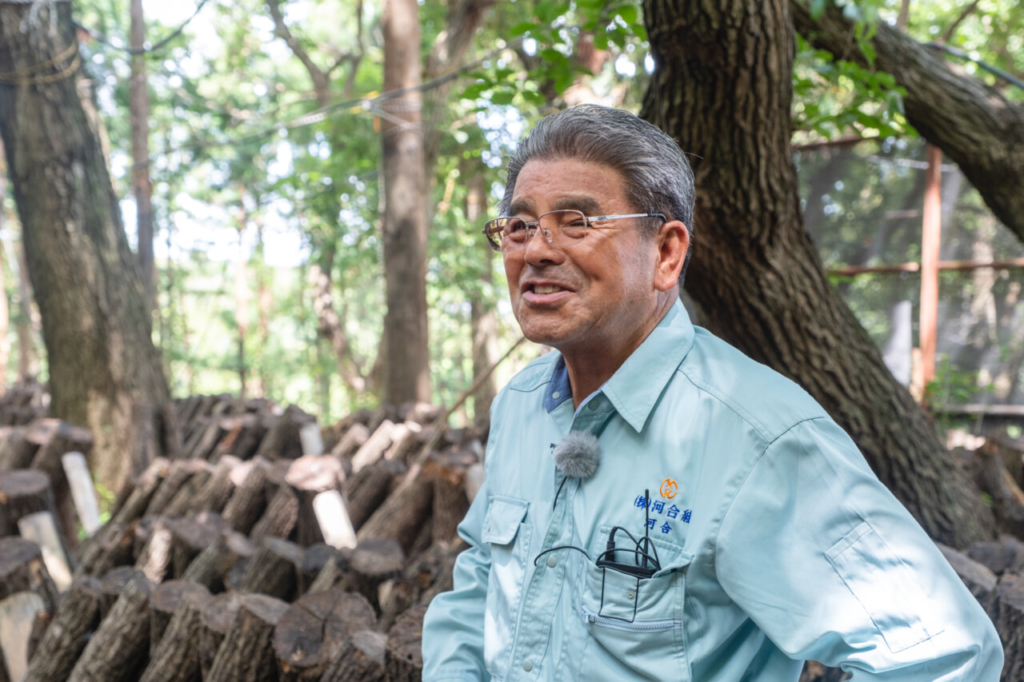
What is the background of a construction company that started shiitake mushroom cultivation?
Today, the company also operates a construction business and an industrial waste disposal business. There were various reasons behind the company’s decision to start shiitake mushroom cultivation. Kiyoshi Kawai, chairman of the board, is now 75 years old. He started growing shiitake mushrooms about 15 years ago when he retired. He recalls that at first it was just a hobby, but he was born and raised as a shiitake mushroom farmer. He grew up with parents who were shiitake mushroom growers, and he has witnessed their way of life. Although he had to take a detour to work for a construction company he started on his own, he felt that he must not lose his parents’ love for shiitake mushrooms, which had nurtured him, so he decided to start growing shiitake mushrooms in 2008. As one would expect from a shiitake farmer with such a strong bloodline, the actual process is quite deep once you get into it. However, the more he got into it, the more he felt that he could no longer do it as a hobby. Thus, the production scale of shiitake mushroom cultivation, which he had been engaged in as an individual, expanded unexpectedly, and about three years after the start, he formed a cooperative with his friends who were engaged in log shiitake mushroom cultivation and made it a full-fledged business. They began shipping fresh shiitake mushrooms to the Kyoto market, an activity they continue to this day. Dried shiitake mushrooms, which had been a hobby at the time of its establishment, began to win prizes at product fairs only three years later. Perhaps it is the nature of the construction industry, but he has not skipped a single detail of the shiitake cultivation process, from the construction of the hodgepodge to the harvesting of the shiitake mushrooms, and he is a late-blooming rookie who is growing remarkably, winning the highest award at the National Dried Shiitake Mushroom Fair, the Minister of Agriculture, Forestry, and Fisheries Award.
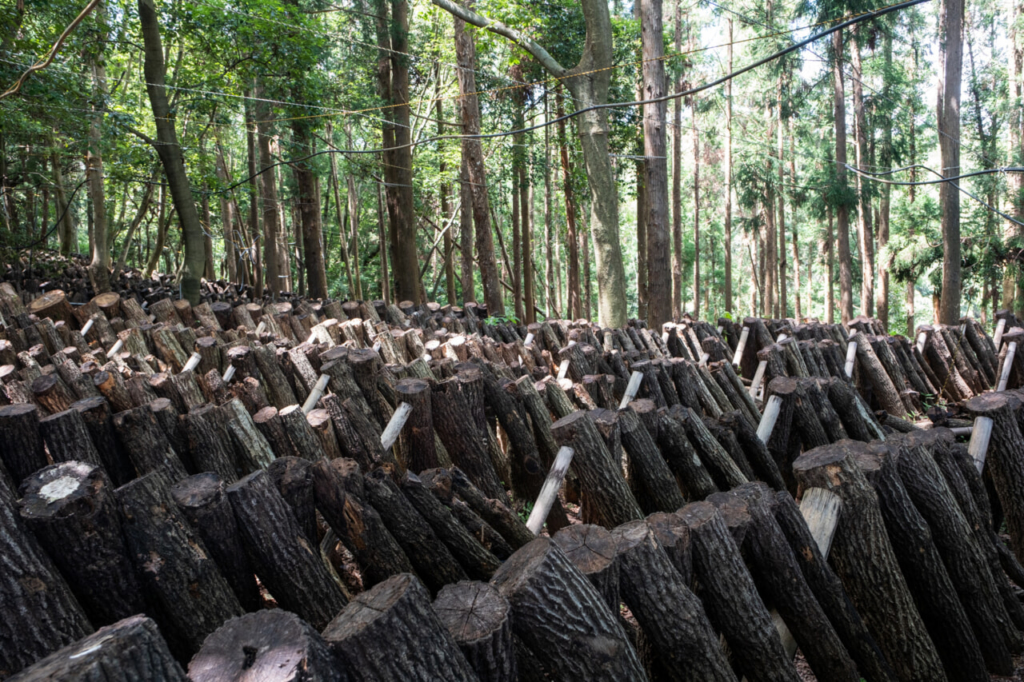
Why we insist on log cultivation
Kawai-gumi’s “log cultivation” is a time-consuming and labor-intensive cultivation method. The process begins with cutting down sawtooth oak trees that are suitable for shiitake cultivation in terms of bark thickness, quality, and production volume, and it takes about two years until the actual harvest. The key is the “hodagi,” which is made by planting the fungus that will become the source of shiitake mushrooms in the cut down sawtooth oak trees. The wood is then placed in a well-ventilated place for about one and a half years, covered with dead leaves and other materials to prevent it from being exposed to too much sunlight. In shiitake cultivation, which requires moderate humidity, direct sunlight is the biggest enemy, as it also causes dryness. Temperature control is also an important part of the process, as growing shiitake mushrooms at the proper temperature (15 to 25 degrees Celsius) is the key to producing fine shiitake mushrooms, but this is a rather high hurdle for natural log cultivation. The main management method is to cover the hodagoki with branches and leaves to avoid direct sunlight, and to ventilate the area by cutting weeds around it. He is especially careful during the high temperatures of summer, but he says that sometimes this does not work out well when dealing with nature. If you can produce good hodagaki, you can produce good shiitake mushrooms,” says Kawai. Until the harvest is complete, he says, he is in a constant battle with the natural world, paying close attention to the climate and temperature day and night.
In recent years, due to the effects of global warming, they are often plagued by the growth of bacteria stronger than the shiitake mushroom fungus. Even on the same mountain, shiitake mushrooms are produced differently depending on the location and environment, so it is a constant process of trial and error as he changes the suitable location from time to time, but Kawai says with a smile that this is also the fun part of shiitake mushroom production.
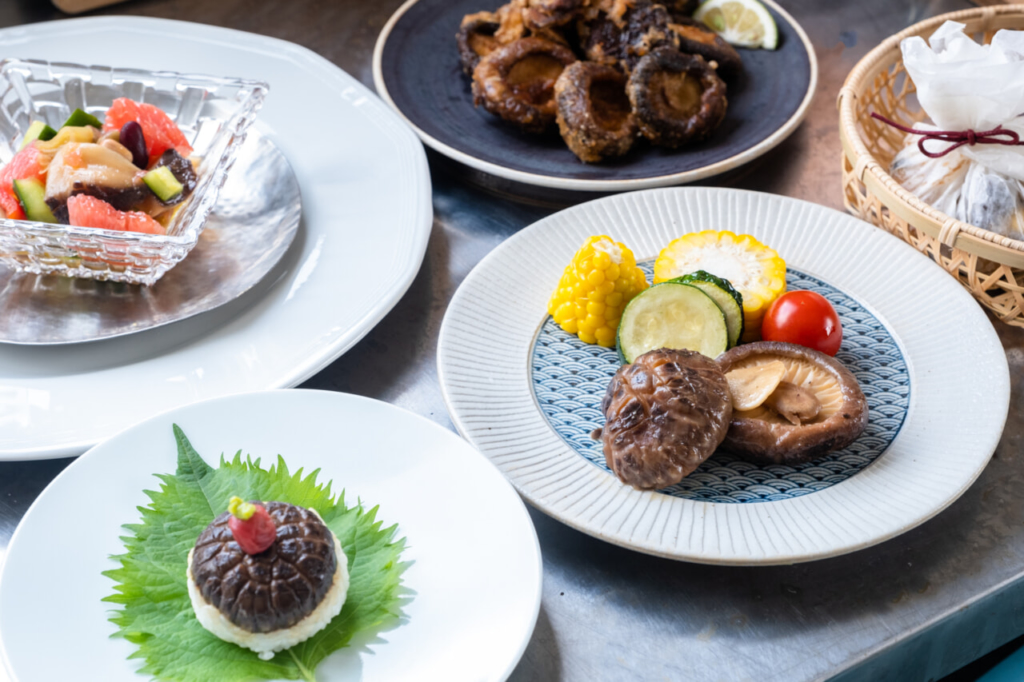
In this way, the natural temperature and humidity must be controlled for optimum growth. It is a time-consuming and labor-intensive production method. This method also makes it impossible to be careless about high temperatures in the summer due to recent climate changes. Because of the influence of the climate, it is impossible to promise stable shipments throughout the year, as is the case with shiitake mushrooms grown in the mycorrhizal beds, but the log shiitake mushrooms grown in the wild have such high rarity value and produce an outstanding taste. The time spent on shiitake mushrooms produces densely packed shiitake mushrooms, and shiitake mushrooms harvested in the middle of winter are said to be like abalones. On the other hand, shiitake mushrooms are grown indoors in an air-conditioned shiitake mushroom bed, which takes about six months to harvest. Because they are easy to grow and can maintain a stable harvest, most of the shiitake mushrooms we usually see in supermarkets are mycorrhizal shiitake mushrooms. They have a good texture and do not have a strong taste or aroma, making them easy to eat even for those who do not like them, and they can be easily incorporated into dishes. Although there are differences depending on the cultivation method, the greatest appeal of log shiitake mushrooms comes from their taste, texture, and aroma. The difference is obvious when you taste them. The thick and resilient shiitake mushrooms can be used in a variety of dishes depending on the cooking method. The possibilities are endless, not only in Japanese cuisine, but also in Italian and French cuisine.
Sustainable, recycling-oriented cultivation that grows with nature
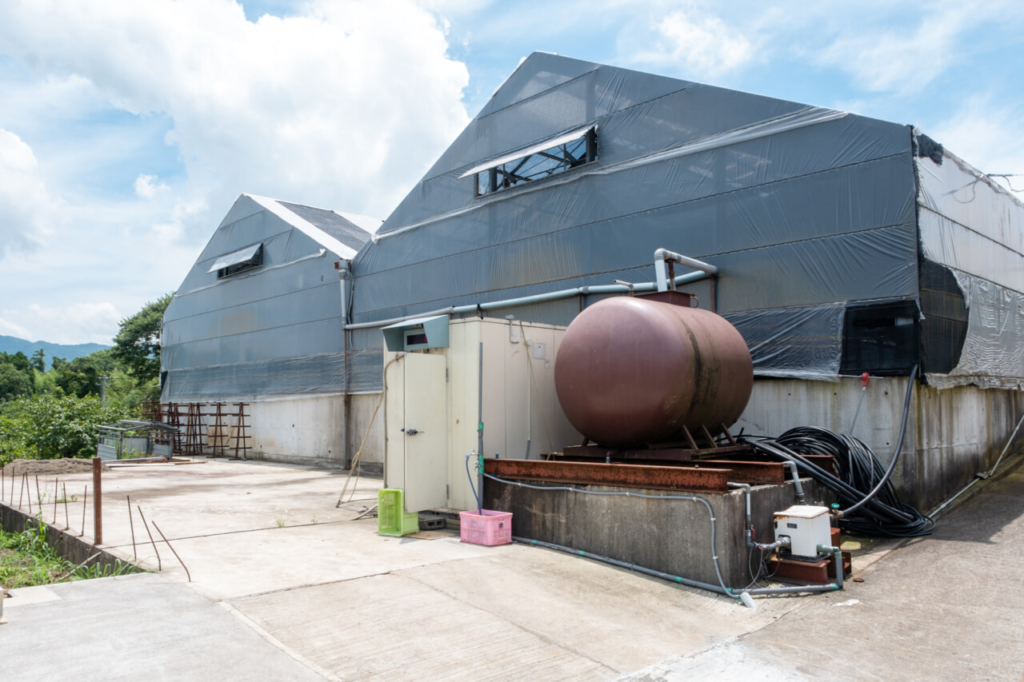
Since the beginning of his business of growing log shiitake mushrooms, Mr. Kawai has had one belief in mind. This belief stems from the environment in which he was born and raised.
He says, “The reason we have sawtooth oak trees and are able to grow shiitake mushrooms now is because of our predecessors. That is why we want to do the same for the next generation, and that is what we are doing now.”
With this desire in mind since the beginning of shiitake mushroom cultivation, the company began by improving the environment of the satoyama. Taking advantage of their strength as a construction company, they used state-of-the-art construction equipment to cut down the trees. In addition to environmental improvement, the company is also committed to environmental protection. For example, instead of discarding old hodagaki trees, the company crushes them and composts them for reuse. The naturally fermented compost, which is made from bamboo and wood, is all data-controlled and used by local farmers, and the vegetables grown with the compost are shipped as products. The compost is also used to prevent damage to the forests by wild boars and other animals.
This recycling-oriented cultivation is a unique cultivation method that is not practiced anywhere else in Oita Prefecture. Kawai-gumi’s approach to this sustainable cyclical cycle is to “return everything to the natural world. In 2020, Kawai-gumi received the Prime Minister’s Award at the 59th Agriculture, Forestry, and Fisheries Festival in recognition of the quality of its shiitake mushrooms as well as its efforts to preserve the satoyama, with an eye toward the future of shiitake mushroom producers.
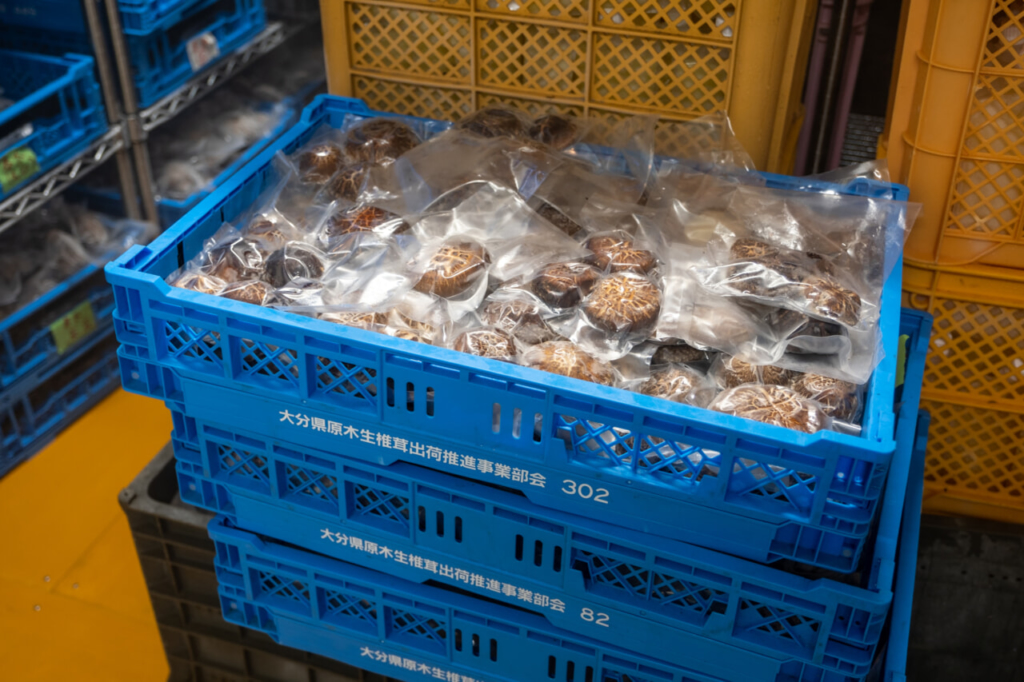
Shiitake Mushroom Culture’s Challenge for a New 100 Years
Mr. Kawai says he not only wants to continue to protect Oita’s dried shiitake mushroom culture, which has continued for more than 100 years since the establishment of the Oita Prefecture Shiitake Mushroom Farmers Association, but also to create a new 100 years. He has expanded his network to the extent that he now ships fresh shiitake mushrooms to Nagoya, Kagoshima, and Kumamoto as well, but there is a fear of mold in the fresh state. After much trial and error, he came up with the idea of “frozen shiitake mushrooms. The idea of frozen shiitake mushrooms was born out of a trial-and-error process to find a way to deliver them in good condition to a large number of people. The best part is that the shiitake itself is said to have a much more concentrated flavor. The frozen shiitake mushrooms are now being served at “Zarai Oita,” Oita Prefecture’s antenna store in Tokyo’s Yurakucho district, and have been well received. The company is currently making the mushrooms in an in-house freezer about 3.5 square meters in size, but they are planning to expand it this year and next.
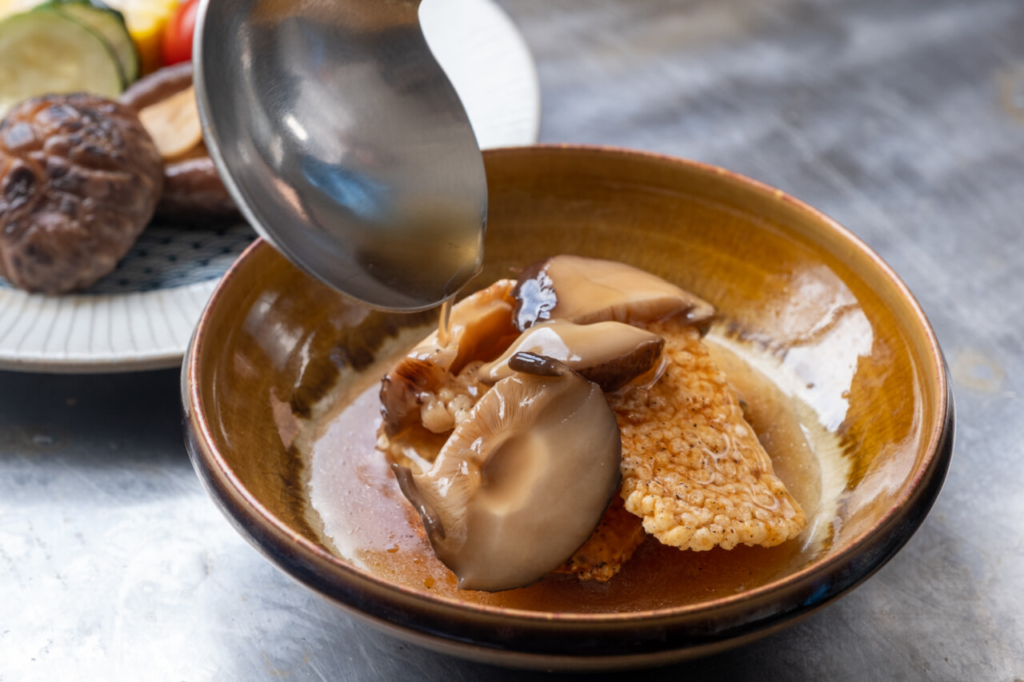
Mr. Kawai says that the freezing method is something he realized only because he entered the industry from a different field. Mr. Kawai says he hopes that the freezing method will help farmers reduce various risks in the management of their business, which is said to be difficult for shiitake mushroom cultivation alone. What do the young people of today want and need? Actively incorporating the opinions of people of different ages will lead to the next 100 years of shiitake culture in Oita Prefecture.
Toward a New Shiitake Mushroom Production Future
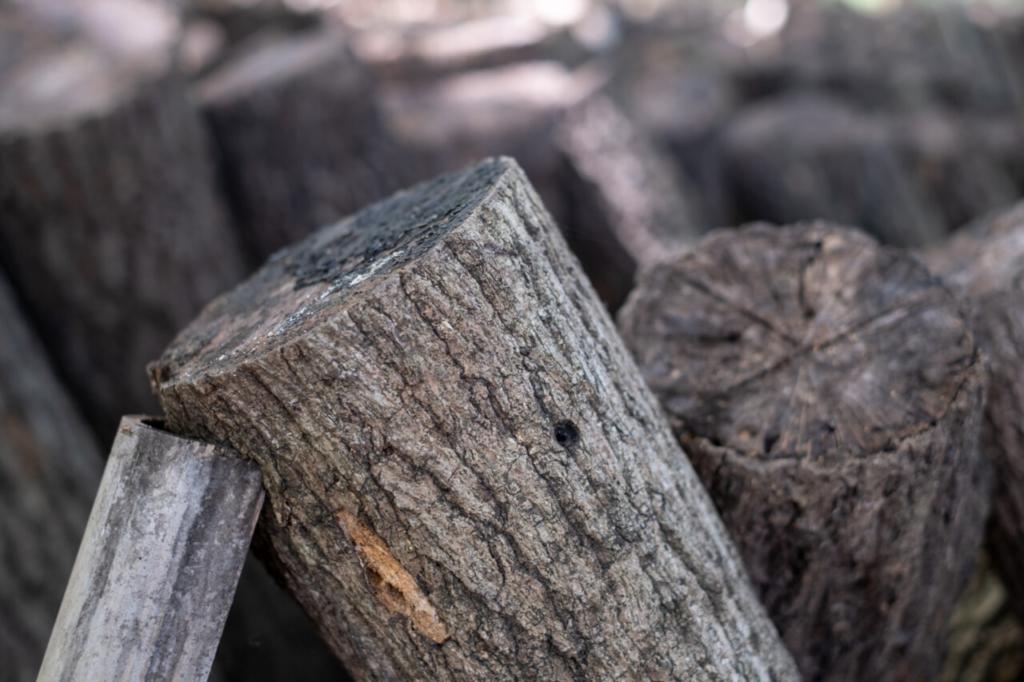
Currently, the average age of shiitake mushroom producers in Oita Prefecture is said to be 75. The aging of the farming population is causing concerns about a decline in production, but the Kawai-gumi’s challenge is not over. The Kawai-gumi is always thinking of new ways to make shiitake mushrooms, and is taking on new challenges. At the same time, the company is always looking to the future while preparing its personnel structure by actively accepting young trainees who will become successors to the shiitake industry.
Mr. Kawai hopes that many people will try and appreciate his shiitake mushrooms. The ideal situation would be for the shiitake mushrooms to be recognized not only in Oita Prefecture, but throughout Japan by a wide range of people of all ages, which would naturally lead to profits. Based on the knowledge and wisdom of shiitake production passed down from their ancestors, the Kawai group is creating a new form of shiitake production that has never existed in Oita Prefecture before. They will continue to face shiitake production with their own beliefs while protecting the earth and its natural ecosystem.




